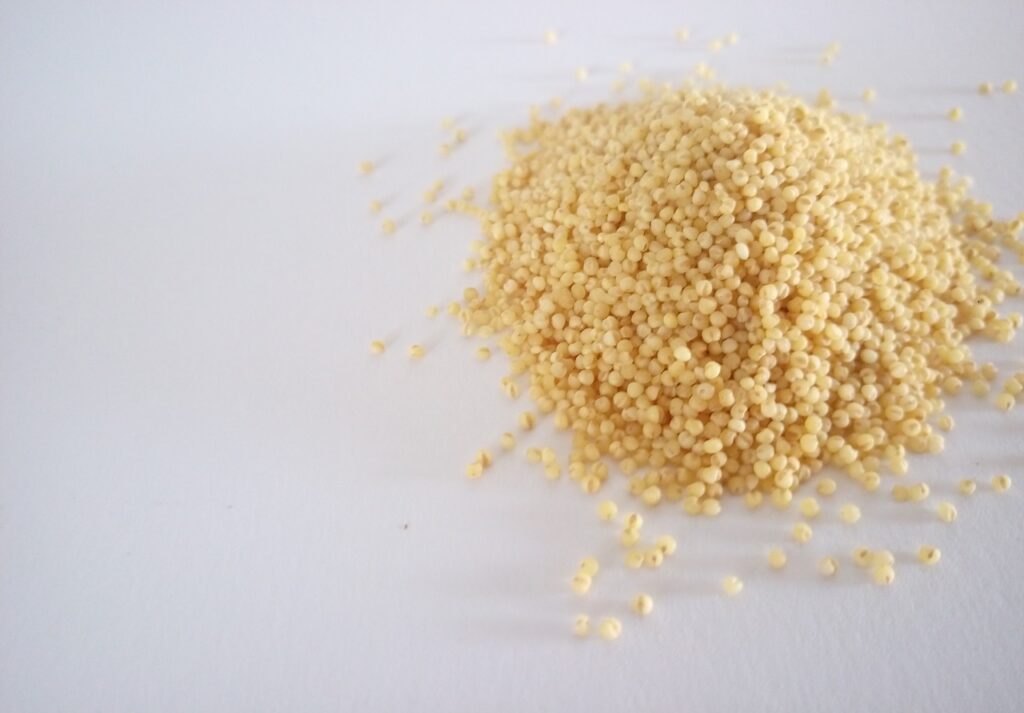I’ve said it often on Dan’s Bird Bites: You should avoid buying bird seeds containing the ingredient red milo. Much like you should read labels of foods you’re eating from the grocery store, it’s well-worth scanning a bag of bird seed you’re buying to avoid those containing red milo.
Why? In a nutshell, some cheaper bags of bird seed are filled with ingredients like red milo to give them bulk without substance. Some birds eat red milo, but most don’t and will toss it aside to eat something better in the mix, like black-oil sunflower seed.
Related Content: This is One of the Best Bird Seeds on Amazon
In my year’s of bird feeding, I’ve avoided this ingredient and feel it’s served me well in ensuring I’m buying higher-quality bird seed for my local feathered friends. I also believe it’s saved me money and waste, since it’s usually tossed aside. I wanted to put together a short piece to share why you should consider doing the same, along with better alternatives.
Oh, and my viewpoint is also backed by sources like Wild Birds Unlimited, the Minnesota DNR, and a piece in the Washington Post.
Disclaimer: Some links found on this page are Amazon affiliate links. If you click an affiliate link and make a purchase, I might earn a commission. As an Amazon Associate I earn from qualifying purchases.
What is Red Milo?

Red milo, also known as grain sorghum, is a grass grain that’s often used as a filler in birdseed mixes. It’s a reddish-round seed that is not appealing to most birds (Project FeederWatch – The Cornell Lab). Red milo is often present in cheap bird seeds. Even though you might be tempted by the price, avoid these! Red milo is usually tossed aside in favor of other bird seed. So, you’re throwing your money away.
I’ve experienced this firsthand. I once put out some bird seed with red milo as a main ingredient as an experiment. Most was tossed aside by Chickadees, Finches, and Cardinals to get to the better sunflower seed in the mix. House Sparrows and Mourning Doves enjoyed the seed, but I didn’t notice many other birds loving it. As a result, it ended up collecting in a gross pile beneath my feeders.
Related Content: The Best and Worst Bird Seed at Target
Here’s an example of a bag of bird seed with red milo below at Target that I snapped a picture of. Look for the little red dots!

You can also simply turn any bag of bird seed over and read the ingredients list. Look for red milo, or sorghum.
Do Any Birds Eat Red Milo?
I mentioned a couple earlier, but in my research, only a few species of birds will regularly eat red milo.
- Brown Headed Cowbirds
- Common Grackles
- Doves
- European Starlings
- Certain Jays, like Steller’s Jays
- Wild Turkeys
What Should I Feed Birds Instead?
If you’re looking for a better choice for birdseed, there are a ton of options. Sunflower seed (here’s one I like), suet, and safflower seed are some of my favorites. These foods draw in crowd favorites like Cardinals, Chickadees, Woodpeckers, Finches, and much more. Just be sure to check the ingredients list for red milo. You can also choose a mix that is specifically designed for attracting a certain type of bird, such as a a songbird or finch mix.
These bird foods can be found at home improvement retailers, online, hardware stores, and local bird stores.
I also like to clarify that red milo is also different than white millet, which is a small yellow-ish grain often found in bird seed. I like white millet as a springtime addition to my bird seed and several different birds like it.

For more on different types of bird seed and food, I recommend you check out my comprehensive guide here.
Wrapping Up
To sum up, if you’re trying to attract a variety of birds to your backyard, red milo isn’t a good choice. It’s better to choose a bird seed that’s appealing to a wide range of birds. You’ll also save yourself money and waste in the long-run by making this change.

Pingback:The Most Common Bird Feeding Mistakes Beginners Make and How to Avoid Them - BIRD BITES
Pingback:The Best Bird Seeds on Amazon (Top 10 List) - BIRD BITES
Pingback:Ranking Bird Seed from Worst to Best - BIRD BITES